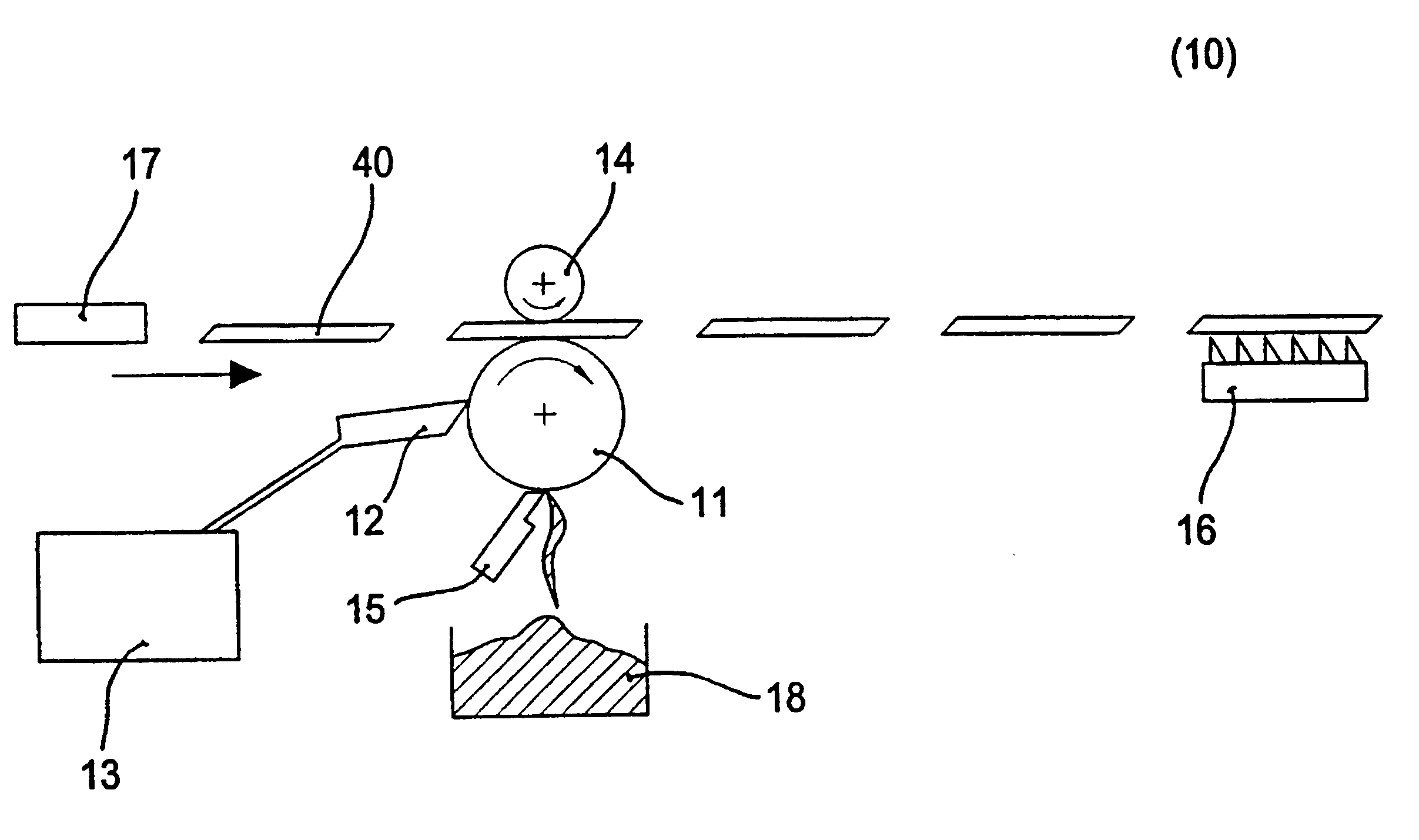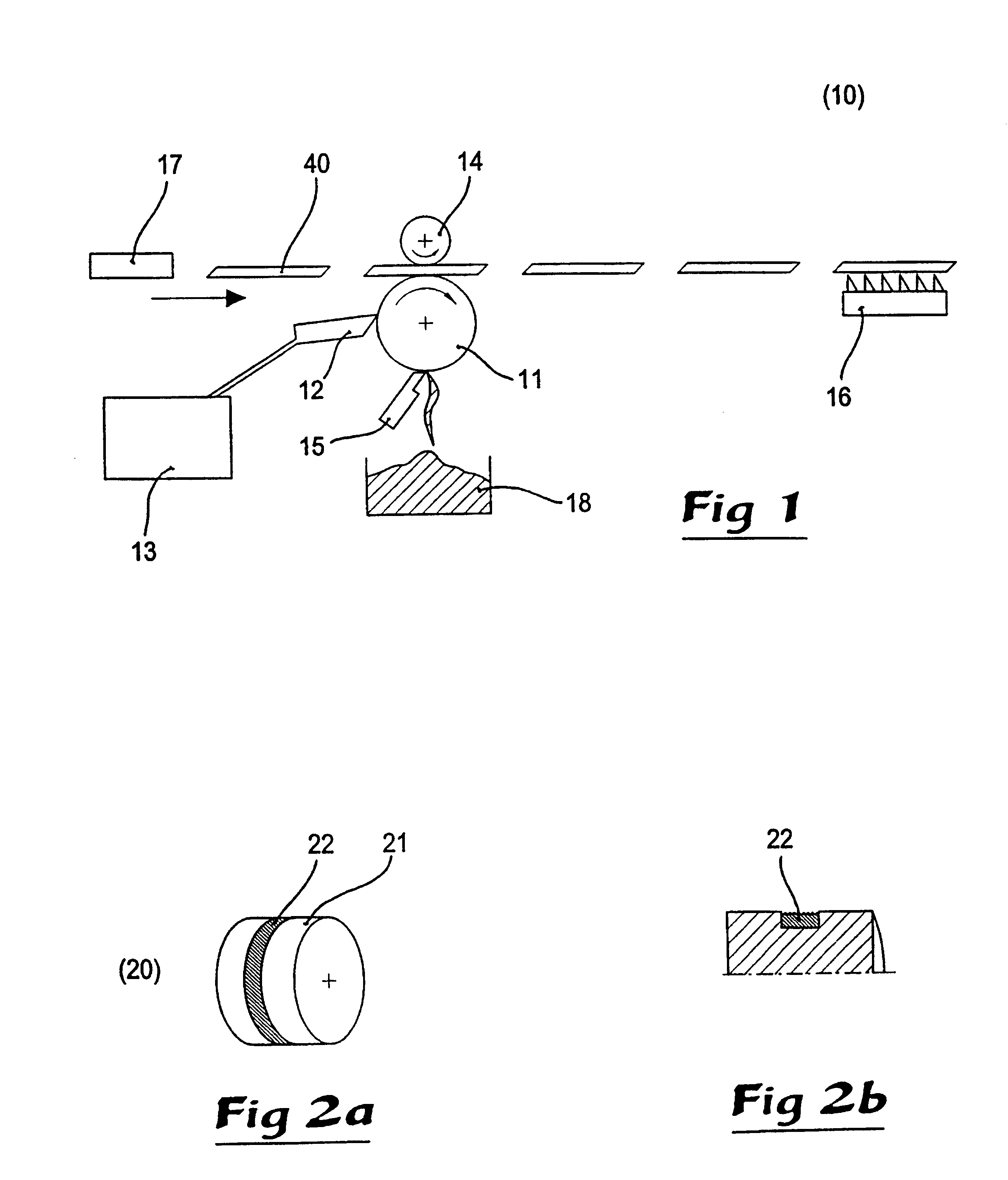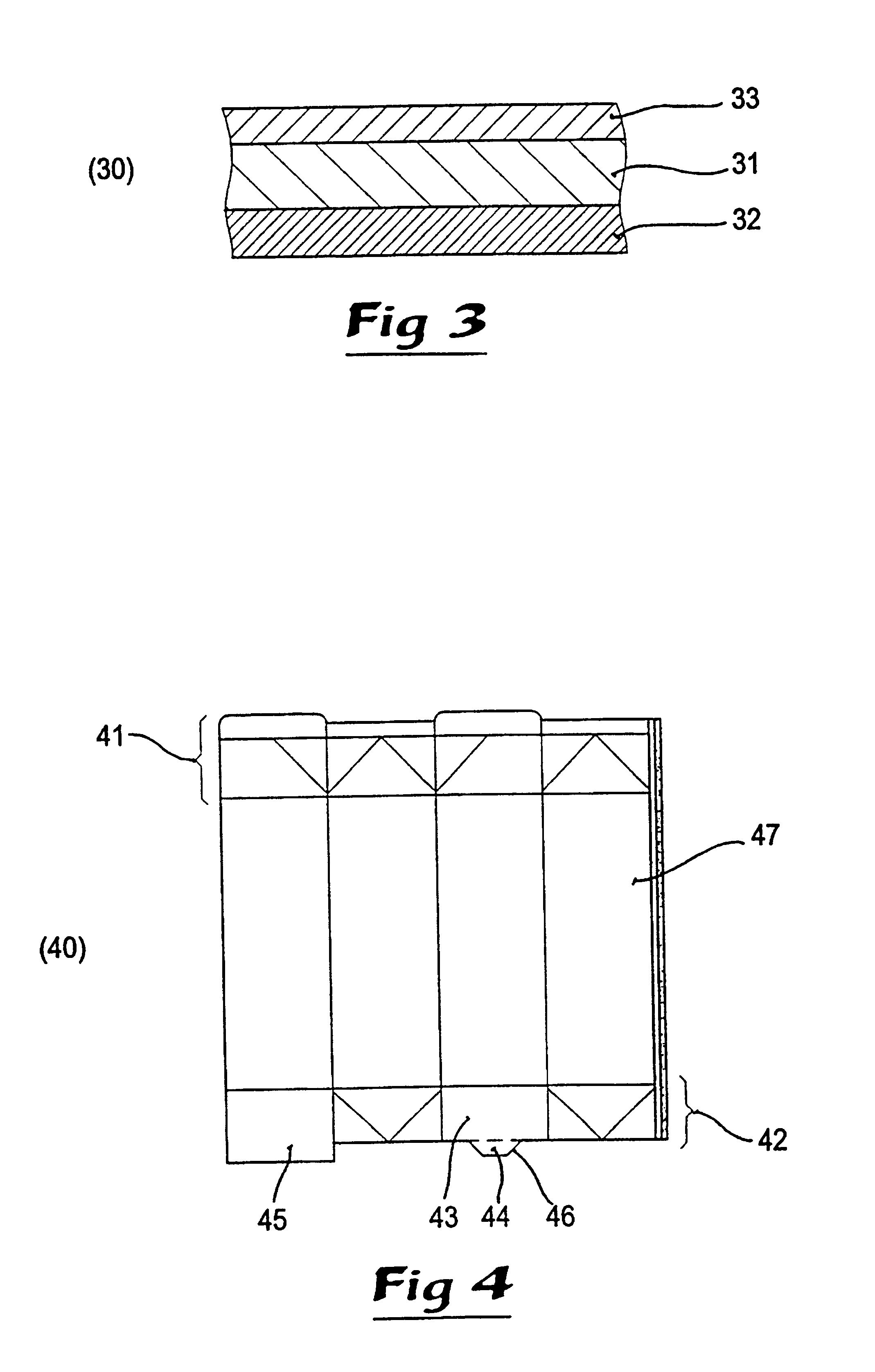Method and an apparatus for producing packaging containers for liquid foods, as well as packaging containers
a technology of liquid food and packaging container, which is applied in the direction of paper/cardboard containers, roof tools, decorative arts, etc., can solve the problems of less flexibility and durability of brittle material layers, difficult thermoseal at rational production speeds, and less flexibility of material layers during the sealing process. achieve the effect of high production speeds
- Summary
- Abstract
- Description
- Claims
- Application Information
AI Technical Summary
Benefits of technology
Problems solved by technology
Method used
Image
Examples
Embodiment Construction
FIG. 1 thus shows an apparatus according to the present invention for applying and sealing, by hot melt glue, a packaging laminate blank in the production of packaging containers for liquid foods, comprising an applicator roller 11 which, on use, may be heated to an application temperature adapted to the hot melt glue. Hot melt glue is applied to the applicator roller 11 in the form of a strand by means of a hot melt glue pistol, a gap nozzle or a similar heating device 12 which converts the solid starting material, normally in the form of granules, pellets or bars, to a molten mass. The starting material is fed to the melting device from a container 13 containing the granules, pellets or bars. The molten glue is applied to the applicator roller in a quantity which is adapted to a predetermined speed of the applicator roller. The molten hot melt glue is then transferred from the applicator roller 11 to a packaging blank 40 in the form of a uniformly thin and uniformly wide strand wh...
PUM
| Property | Measurement | Unit |
|---|---|---|
| Angle | aaaaa | aaaaa |
| Angle | aaaaa | aaaaa |
| Angle | aaaaa | aaaaa |
Abstract
Description
Claims
Application Information
 Login to View More
Login to View More - R&D
- Intellectual Property
- Life Sciences
- Materials
- Tech Scout
- Unparalleled Data Quality
- Higher Quality Content
- 60% Fewer Hallucinations
Browse by: Latest US Patents, China's latest patents, Technical Efficacy Thesaurus, Application Domain, Technology Topic, Popular Technical Reports.
© 2025 PatSnap. All rights reserved.Legal|Privacy policy|Modern Slavery Act Transparency Statement|Sitemap|About US| Contact US: help@patsnap.com



